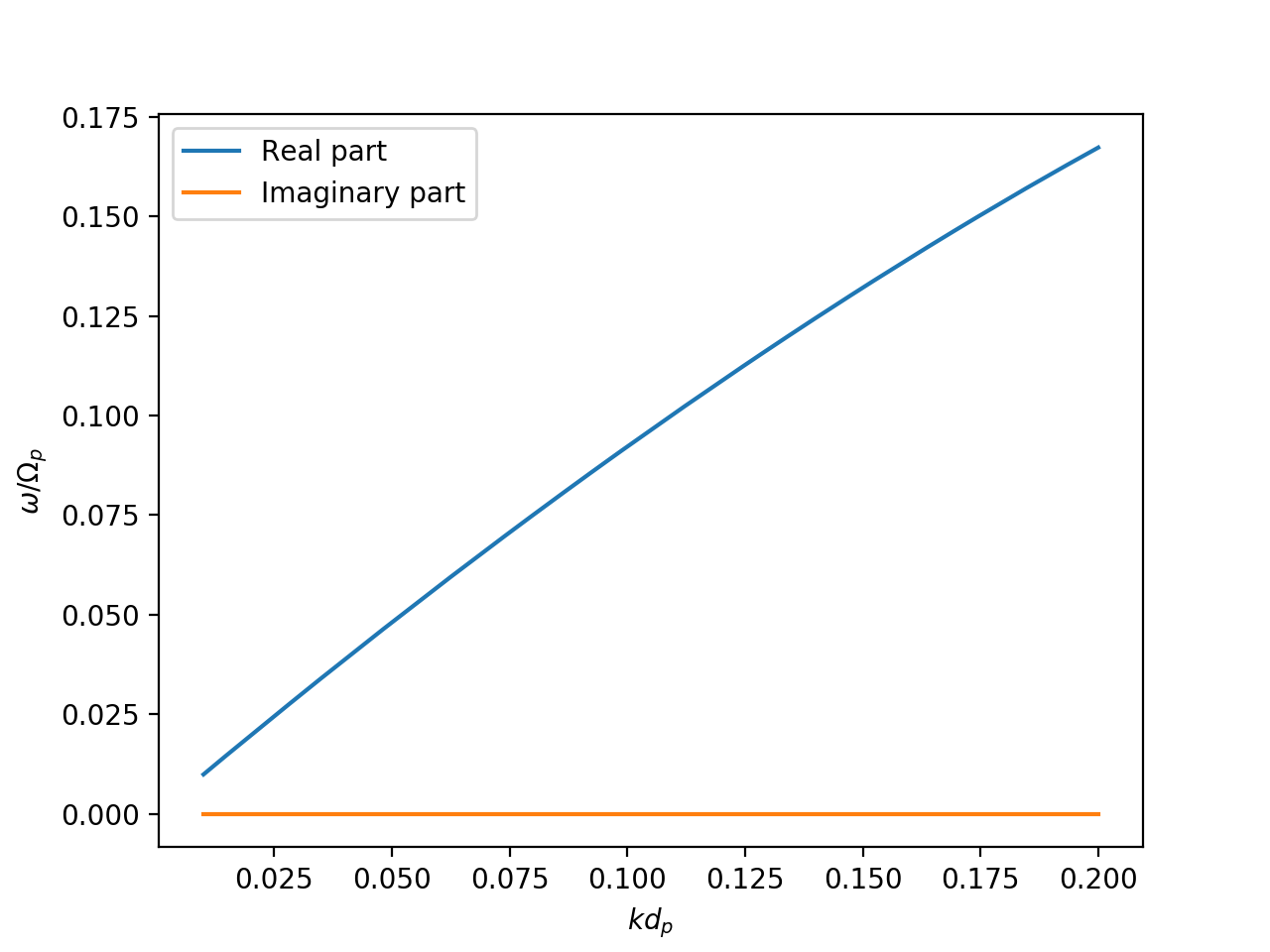nhdspy¶
nhdspy is a wrapper for the NHDS dispersion relation solver. For the original NHDS code see https://github.com/danielver02/NHDS.
If you use this software to produce data for publication, please cite the NHDS paper: http://iopscience.iop.org/article/10.3847/2515-5172/aabfe3
Running¶
NHDS is written in fortran, so requires a working fortran compiler. When nhdspy is first run it attempts to compile NHDS; if it is not successfully it gracefully exits and prints the fortran compile error.
Example¶
import nhdspy
import matplotlib.pyplot as plt
electrons = nhdspy.Species(-1, 1 / 1836, 1, 0, 1, 1)
protons = nhdspy.Species(1, 1, 1, 0, 1, 1)
va = 1e-4
theta_kB = 0.001
omega_0 = 0.009 - 0.0001 * 1j
kzmin = 0.01
kzmax = 0.2
input = nhdspy.InputParams([electrons, protons], omega_0, theta_kB,
va, kzmin, kzmax)
output = nhdspy.run(input)
fig, ax = plt.subplots()
ax.plot(output.kz, output.omega_real, label='Real part')
ax.plot(output.kz, output.omega_imag, label='Imaginary part')
ax.set_xlabel('$kd_{p}$')
ax.set_ylabel(r'$\omega / \Omega_{p}$')
ax.legend()
plt.show()
